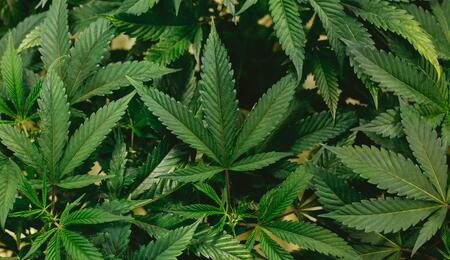Indoor vs. Outdoor Cannabis Growing: 3 Key Differences

Cannabis has long been cultivated outdoors and is one of the oldest agricultural crops in existence. Growing indoors, however, has been around for less than a century and came about as a result of prohibition.
Most advancements in cannabis production have occurred during the era of indoor cultivation; staying out of sight was initially a way to protect the grower from the laws against cannabis. As technology advanced, the industry was able to expand its knowledge of the plant by leaps and bounds, and this was also true for areas where outdoor farming managed to succeed like Southern Oregon and Northern California. The differences are not only important to aspiring cannabis farmers, but to the consumer comparing outdoor and indoor grown products at the dispensary counter. How does the environment affect the outcome of a strain, and what considerations must a grower make when choosing between the two?
Controlled vs. Natural Climates
There are many reasons to grow indoors over outdoors. The freedom to choose your location with minimal constraints and the ability control of your environment are just a few. Indoor farming allows for complete control of your environment. Controlling temperature, light source, CO2 production, and humidity creates a stable habitat to optimize your plants’ growth without having to risk outdoor elements. The indoor grower typically finds cosmetically pristine flowers with higher THC percentages. On the other hand, no bulb can produce the same spectrum of light unique to the sun which, in turn, limits indoor gardens with smaller yields and less vigorous plants.
Outdoor farming, however, requires a climate suitable for cannabis production – good sun exposure, hot days, warm nights, and low humidity. Nevertheless, growing indoors has complications as well. When the grower tries to create a natural environment indoors, there are factors in the natural process that cannot be replicated. For example, plants grown outside have substantial help against mites from natural predators who share the habitat. Wasps, ants, and ladybugs are some of “nature’s helpers” that keep mite populations at bay. Indoors, the grower cannot hope to completely mimic the incredibly complicated natural environment. If mites appear in an indoor grow space, they can be a challenge to control.
With the ever-increasing consumer concerns about the overuse of pesticides and insecticides, some cultivators might find the trade-offs of growing outdoors worth investigating. Cost Comparison of Indoor and Outdoor Gardens Both indoor and outdoor grows demand substantial up-front costs, but the difference becomes apparent long-term. Indoor climate control systems can cost a small fortune to operate, whereas a majority of the costs associated with outdoor grows are in the startup of the operation. Labor costs for indoor and outdoor gardens also varies drastically. With continual turnover in an indoor garden, there's always work to be done. Pruning, trellising, watering, feeding, and harvest work are ongoing and more demanding for smaller yields. Outdoors, the grower is working one crop throughout the season. Many outdoor farms with large outputs can operate with up to four employees full-time until harvest, when additional workers need to be brought in.
The high costs of indoor farming may be recouped through breeding projects, year-round harvests, and potent products that have higher selling points. Furthermore, manufactured indoor environments allow growers to cultivate strains that would otherwise be unsuitable for their local outdoor environment and climate. However, with the rising cost of energy and an increasing demand for more flower in the marketplace, outdoor farming may be able supply the market with quality products at a more reasonable price. Quality of Cannabis Grown Indoors vs. Outdoors Indoor flower has long been recognized as the top-of-the-line product. Being able to control your environment and expedite breeding has resulted in aesthetically beautiful strains with magnificent flavor profiles. Introducing higher CO2 levels than in the natural environment increases bud growth and produces THC levels that are difficult to obtain outdoors.
Additionally, indoor cannabis does not have to deal with rain, wind, or any of the other natural elements that can damage an outdoor crop. The buds remain in pristine condition and only start to degrade once handling begins. The scale of most indoor operations generally allows for crops to be harvested in peak conditions and for the product to be cured in a controlled climate. Outdoor flower is, of course, subject to the whims of the natural environment. Though the end product may not look as perfect, the taste, effects, and aroma should still be there. Some consumers find sun-grown organic cannabis to be preferable to the cosmetically pristine indoor alternative. Many stereotypes about outdoor cannabis exist for one key reason: legality. A large majority of outdoor cannabis seen by consumers has gone through a gauntlet of post-harvest abuse. Partly due to conflicts between state and federal law, many outdoor cannabis farms have to take risks to cultivate their product.
As a result, oftentimes the harvest is rapid, curing is nearly non-existent, and aggressive handling is necessary to get it to market. As the laws change and outdoor facilities are able to take their time in processing, the market should see an increase in quality from outdoor grows. Recently there has been an emergence of commercial greenhouse farming that strikes a balance between the two methods. This style of farming is producing quality results, which is exciting to see in this emerging industry. As we have seen, all styles of farming offer positives and negatives, and as a consumer or a producer, it's always important to continually educate yourself. Step outside of your routine to try something new, and keep an open mind. Source: www.leafly.com



.png)